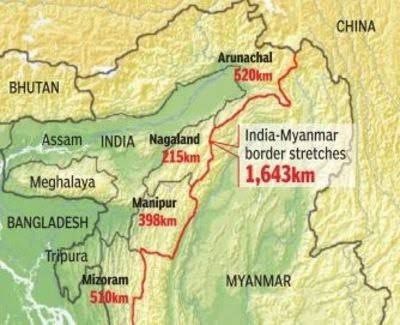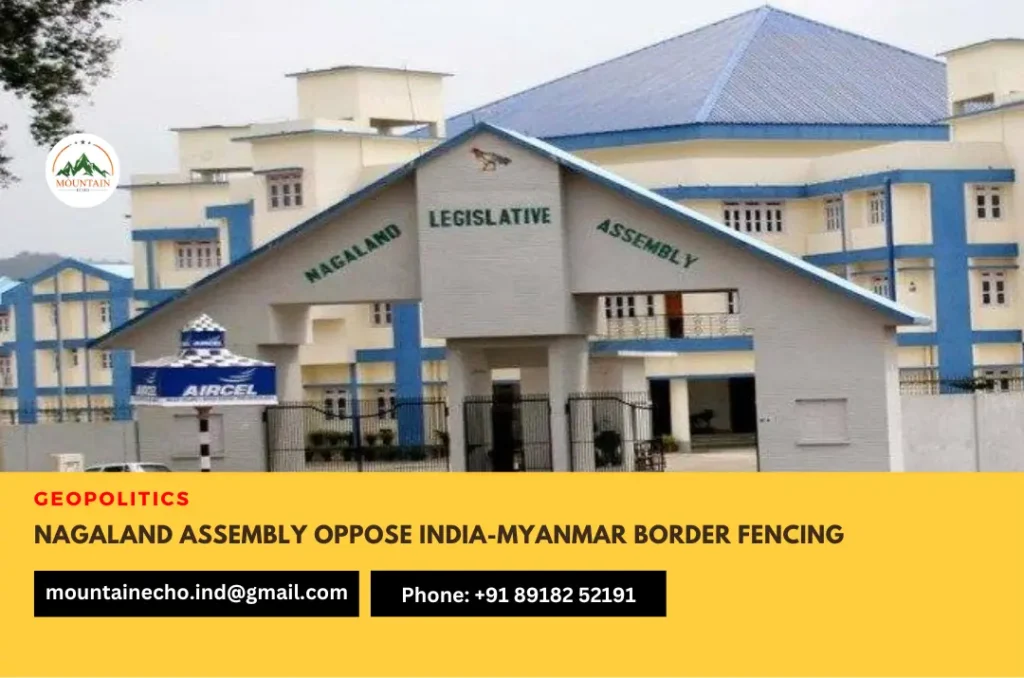Why Nagaland is opposing Centre’s decision to fence Indo-Myanmar border and scrap the Free Movement Regime (FMR)
The Nagaland assembly on the 29th of February, 2024, adopted a resolution on the Central Government’s recent announcement to scrap the Free Movement Regime (FMR) along the Indo-Myanmar Border and to fence the India-Myanmar border.
India and Myanmar share a 1643-km border, running along Arunachal Pradesh (520 km), Nagaland (215 km), Manipur (398 km) and Mizoram (510 km). The FMR allows citizens of both countries to travel upto 16 Kms within each other’s territory without any visa or documentation.

The Central Government has cited insurgency and drug-smuggling as the reasons for the decision to fence the borders and end FMR. The Government is also worried of the spill over of the ongoing conflict in Myanmar between the Junta and rebel ethnic armed organizations (EOAs) that began after the military coup in 2021.
The primary opposition to the Central Government’s decision to fence Indo-Myanmar border and scrap the Free Movement Regime (FMR) arises from the fact that the Naga tribes and communities are spread across both India and Myanmar.
People living in the border areas have a long history of cross-border movement, predating the establishment of the international border. The Free Movement Regime (FMR) recognized this historical reality. The FMR allowed the tribes to maintain social, cultural, and familial ties across the border. Fencing and stricter border restrictions sever these connections. It is estimated that there are about 250 villages with over 3 lakh people living within 10 Kms of the border. Many people depend on cross-border trade and movement for their livelihoods. The border fencing restricts their access to markets and resources.
Terming the Central Government’s decision as ‘illogical’ MLA Kuzholuzo Neinu of the Naga People’s Front (NPF) party, said that the Nagas will not accept the decision and that the grounds for scrapping FMR are not valid.
Deputy chief minister TR Zeliang noted that Naga ancestors lived as free people without any artificial borders until the Treaty of Yandabo, 1826 that established the current India-Myanmar boundary. He said the Naga people and the Kuki-Chin-Mizo communities were arbitrarily divided by an imaginary line between India and Myanmar. He pointed out half of Naga families resided in Myanmar and the other half in India, particularly Nagaland and other in states like Manipur, Assam and Arunachal Pradesh. He also added that the Naga people are spread over about 50,000 sq km on the Indian side, and about 90,000 sq km in Myanmar.
The resolution of the Nagaland Assembly stated that the Centre’s decision to suspend the FMR and fence the Indo-Myanmar boundary would disrupt the age-old historical, social, tribal, and economic ties of the Naga people living on both sides of the international border. The Mizoram Assembly has also passed a resolution to oppose the Central Government’s decision on border-fencing.
The Nagaland Assembly resolved to request that the Government of India to work out regulations for the movement of people across borders in close consultation with the people inhabiting the border areas and for suitably bringing in the village council authorities concerned in the entire system of regulations.



